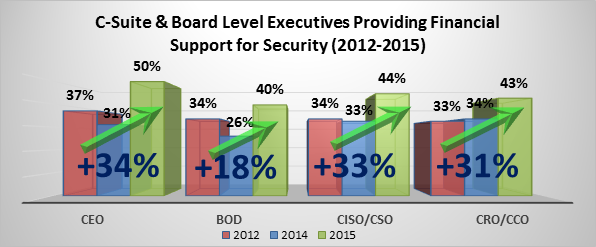Earlier today I presented findings from my recent EMA Radar for Workload Automation (WLA): Q1 2016 report. The recording for the webinar is now live here.
Q&A from EMA Radar for Workload Automation (WLA): Q1 2016
By Dan Twing on Mar 16, 2016 8:05:41 AM
Automation is Key to Staying in the Driver’s Seat of Your Data-driven Strategy
By Dan Twing on Feb 8, 2016 12:54:28 PM
More and more organizations are increasing the use of data in their decision making. EMA describes this as having a data-driven strategy. Recent research has revealed that almost 63% of respondents included data-driven strategies in their organization at a significant level. EMA has been tracking the growth of big data with annual research since 2012. From our 2015 research, you can see in the chart below how organizations are moving forward with their big data projects.
2016: Looking Ahead at ITSM—Want to Place Any Bets?
By Dennis Drogseth on Jan 22, 2016 12:52:29 PM
I thought I’d begin the year by making some predictions about what to look for in 2016 in the area of IT service management (ITSM). For those of you who have been following my blogs with any regularity, and particularly for those who sat in on our webinar for the research report “What Is the [...]
Who Owns User and Customer Experience Management?
By Dennis Drogseth on Jan 22, 2016 12:52:28 PM
There is growing industry attention to user, customer, and digital experience management—often condensed by the acronym UEM for “user experience management.” This attention is more than justified, but most of the buzz leaves out critical questions like, “What is user experience management?”, “Who really runs (or who should run) the UEM show in the digital [...]
PODCAST: Discussing Qlik unSummit and QlikView 12
By John Myers on Jan 5, 2016 9:03:35 AM
HEAT Software Meets the Need for Endpoint Protection Head-On
By David Monahan on Dec 11, 2015 12:40:49 PM
In many organizations, endpoints see virtually constant change. Users access, download, and utilize applications, data, drivers, files, toolbars, widgets, etc., introducing both new security threats and undocumented changes in systems and processes. For better or for worse, all of these activities leave their mark on the endpoint.
Best Practices for Innovating Through Cloud Technologies – Utilizing Public, Private, and Hybrid Cloud
By Dan Twing on Nov 25, 2015 9:15:12 AM
Cloud computing can speed up deployment, reduce costs, and increase efficiency and connectivity. It can open up new ways to get computing work done, but more importantly, the inherent connectivity can change the way employees interact with each other and with customers. It can also change the way companies interact with suppliers and partners. The ease of standing up new apps and connecting with users through mobile devices, as well as the minimal capital investment, can spur innovation.
The Rise of Thingbots in the Internet of Things (IoT)
By David Monahan on Nov 20, 2015 12:50:39 PM
The Internet can be a pretty scary place. Places like the dark web exist in the form of trading houses with stolen personal information from credit cards and social security numbers, to health records and full identities being obtained for a price. Malware development and deployment and other attack services such as DDoS and botnets can be rented by the hour. Recent reports indicate that DDoS attacks are increasing in both frequency and size, and the problem of botnets being used as attack networks or launch points in DDoS and other malicious activities is significant. Indications are that it will only continue to get worse.
EMA Research Shows that Cyber Security is Achieving Executive Visibility in a Big Way
By David Monahan on Nov 20, 2015 12:50:32 PM
One of the services that EMA provides to the tech industry is research. During the course of the year, numerous projects are launched to help IT consumers and vendors understand market perceptions. EMA then provides analysis and forecasts on trends based upon those perceptions.
Why Analytics and Automation Are Central to ITSM Transformation
By Dennis Drogseth on Nov 9, 2015 11:12:00 AM
In research done earlier this year, we looked at changing patterns of IT service management (ITSM) adoption across a population of 270 respondents in North America and Europe. One of the standout themes that emerged from our findings was the need for the service desk to become a more automated and analytically empowered center of [...]




